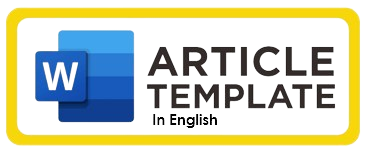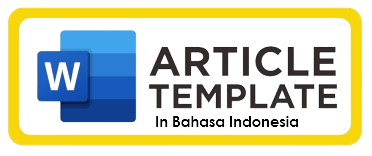Pengaruh Gaya Kepemimpinan Kepala Sekolah Terhadap Motivasi Kerja Guru: Sebuah Telaah Literatur
DOI:
https://doi.org/10.64420/jetlr.v1i1.147Keywords:
Leadership Style, Work Motivation, Head of School, TeacherAbstract
Education is essentially an effort to pass on values and at the same time to help humanity in living life and civilization. Education that is managed in an orderly, orderly and efficient manner can produce something that is able to speed up the course of an orderly learning process and achieve common goals. The principal is a leader and manager who must organize, give orders and protect his subordinates, namely teachers, and solve problems that arise. arise. The principal's leadership style greatly influences teacher work motivation because if demands or expectations are met it will have a positive effect, and vice versa. Work motivation is a very important thing in efforts to achieve organizational goals. Thus, the influence of the principal's leadership on teacher work motivation plays a very important role in the continuity of an effective, conducive and cheerful teaching and learning process in the school environment.
References
Akbar, L., & Imaniyati, N. (2019). Gaya kepemimpinan transformasional kepala sekolah terhadap kinerja guru, JURNAL PENDIDIKAN MANAJEMEN PERKANTORAN, 4 (2), 176-181.
Arinda Frismelly, M. Giatman, & Ernawati. (2021). Pengaruh Gaya Kepemimpinan Kepala Sekolah Terhadap Kinerja Guru. Dirasah : Jurnal Studi Ilmu Dan Manajemen Pendidikan Islam, 4(2), 81-88. https://doi.org/10.29062/dirasah.v4i2.308
Baihaqi, M. I. (2015). PENGARUH GAYA KEPEMIMPINAN KEPALA SEKOLAH DAN MOTIVASI KERJA TERHADAP KINERJA GURU DI MA MA ’ARIF SELOREJO BLITAR. Konstruktivisme : Jurnal Pendidikan Dan Pembelajaran, 7(2), 97-106. https://doi.org/10.35457/konstruk.v7i2.14
Damayani, T., Arafat, Y., & Eddy, S. (2020). Pengaruh Kepemimpinan Kepala Sekolah dan Motivasi Kerja terhadap Kinerja Guru. Journal of Innovation in Teaching and Instructional Media, 1(1), 47–58.
Darsono, Y. (2020). Pengaruh Gaya Kepemimpinan Dan Motivasi Kerja Terhadap Kinerja Karyawan. Jurnal Health Sains, 1(3), 288–302. https://doi.org/10.46799/jsa.v1i3.66
Ibrahim, M.Y., & Amin, A. (2014). Model kepemimpinan pengajaran pengetua dan kompetensi pengajaran guru. JuKu: Jurnal Kurikulum & Pengajaran Asia Pasifik, 2 (1), 11-25.
Ishak., Yusrizal., & Bahrun. (2016). Kepemimpinan Kepala Sekolah Dalam Meningkatkan Kinerja Guru Pada Sma Negeri 4 Wira Bangsa Meulaboh Dan Sma Negeri 3 Meulaboh. Jurnal Administrasi Pendidikan Pascasarjana Universitas Syiah Kuala, 4(1), 33-46.
Ii, B. A. B. (2016). Kepemimpinan Kepala Sekolah. Yogyakarta: Media Akademik.
Maemonah, S. (2015). Landasan Teori Kepemimpinan BAB II. Putaka Aufia Media, 17–50.
Neni, S.M., & Nurachadijat, K. (2023). Gaya Kepemimpinan Kepala Sekolah Terhadap Motivasi Kerja Guru. Jurnal Ilmiah Dan Karya Mahasiswa, 1(3), 10–25. https://doi.org/10.54066/jikma-itb.v1i3.278
Lumban Gaol, N. T. (2017). Teori dan Implementasi Gaya Kepemimpinan Kepala Sekolah. Kelola: Jurnal Manajemen Pendidikan, 4(2), 213–219.
Ngiode, S. (2016). Pengaruh Kepemimpinan Kepala Sekolah, Motivasi Kerja dan Disiplin Kerja Terhadap Kinerja Guru MTs.N Batudaa Kabupaten. Tadbir: Jurnal Manajemen Pendidikan Islam, 4(2), 127–137. Retrieved from https://journal.iaingorontalo.ac.id/index.php/tjmpi/article/view/446
Sampurno, D., & Wibowo, A. (2015). KEPEMIMPINAN KEPALA SEKOLAH, LINGKUNGAN KERJA, MOTIVASI KERJA, DAN KINERJA GURU DI SMK NEGERI 4 PANDEGLANG. Jurnal Pendidikan Ekonomi Dan Bisnis (JPEB), 3(2), 165–180. https://doi.org/10.21009/JPEB.003.2.5
Sari, M., & Asmendri, A. (2020). Penelitian Kepustakaan (Library Research) dalam Penelitian Pendidikan IPA. Natural Science, 6(1), 41–53. https://doi.org/10.15548/nsc.v6i1.1555
Downloads
Published
How to Cite
Issue
Section
License
Copyright (c) 2025 Nova Ananda, Reski Ramadani, Desy Eka Citra Dewi

This work is licensed under a Creative Commons Attribution-ShareAlike 4.0 International License.
Authors who publish with this journal agree to the following terms: (1) Authors retain copyright and grant the journal right of first publication with the work simultaneously licensed under a Creative Commons Attribution-ShareAlike 4.0 International. that allows others to share the work with an acknowledgement of the work's authorship and initial publication in this journal; (2) Authors are able to enter into separate, additional contractual arrangements for the non-exclusive distribution of the journal's published version of the work (e.g., post it to an institutional repository or publish it in a book), with an acknowledgement of its initial publication in this journal; (3) Authors are permitted and encouraged to post their work online (e.g., in institutional repositories or on their website) prior to and during the submission process, as it can lead to productive exchanges, as well as earlier and greater citation of published work.



